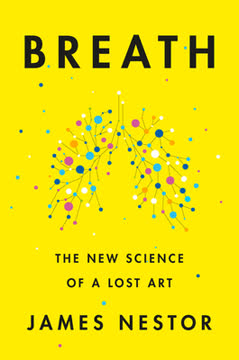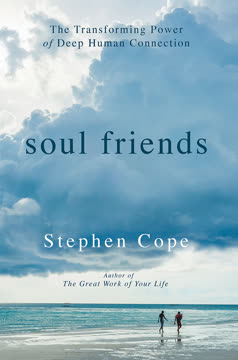Key Takeaways
1. Discover Your Dharma: The Path to Fulfillment and Purpose
"If you bring forth what is within you, what you bring forth will save you; if you do not bring forth what is within you, what you do not bring forth will destroy you."
Dharma is your life's calling. It's the unique role you're meant to play in the world, based on your innate talents and passions. Discovering and living your dharma is essential for a fulfilled life.
The journey to dharma involves:
- Self-reflection and introspection
- Identifying your natural gifts and interests
- Aligning your actions with your inner truth
- Overcoming doubt and fear to pursue your purpose
Many people struggle to find their dharma, often because they're focused on external expectations or societal norms. However, true fulfillment comes from embracing your authentic self and contributing your unique gifts to the world.
2. Embrace Your Gift: Trust in Your Innate Talents
"It is better to fail at your own dharma than to succeed at the dharma of someone else."
Your gift is your unique contribution. Everyone has innate talents and abilities that, when nurtured and developed, can lead to extraordinary achievements and personal satisfaction.
Embracing your gift involves:
- Recognizing and valuing your natural abilities
- Developing your talents through deliberate practice
- Trusting in the process of growth and learning
- Resisting the urge to compare yourself to others
Many great figures throughout history, such as Jane Goodall and Henry David Thoreau, achieved success by fully embracing their unique gifts. Their stories demonstrate that trusting in your innate talents can lead to profound contributions to society and personal fulfillment.
3. Unify Your Actions: Commit Fully to Your Calling
"When meditation is mastered, the mind is unwavering like the flame of a lamp in a windless place."
Unification is the key to mastery. To fully realize your dharma, you must align all aspects of your life with your calling, bringing focused energy and commitment to your chosen path.
Unifying your actions involves:
- Organizing your life around your dharma
- Eliminating distractions and unnecessary commitments
- Developing a consistent practice or routine
- Cultivating single-minded dedication to your purpose
Examples like Ludwig van Beethoven and Camille Corot demonstrate the power of unification. By fully committing to their art, they were able to achieve extraordinary levels of mastery and create enduring works that continue to inspire.
4. Let Go of Outcomes: Practice Non-Attachment
"You have the right to work, but never to the fruit of work."
Non-attachment frees your energy. By letting go of your attachment to specific outcomes, you can focus more fully on the present moment and the quality of your actions.
Practicing non-attachment involves:
- Focusing on the process rather than the results
- Accepting both success and failure with equanimity
- Recognizing that you can't control all outcomes
- Finding joy in the act of doing, rather than in external rewards
The lives of figures like Robert Frost and John Keats illustrate the power of non-attachment. By focusing on their craft rather than external validation, they were able to create timeless works of art and find deep personal fulfillment.
5. Turn Adversity into Growth: Transform Challenges into Opportunities
"When difficulties arise, see them as dharma."
Adversity can be a catalyst for growth. Challenges and setbacks, when approached with the right mindset, can become opportunities for personal development and deeper understanding.
Transforming adversity involves:
- Reframing difficulties as learning experiences
- Developing resilience and adaptability
- Finding meaning in suffering
- Using challenges to deepen your commitment to your dharma
The story of Marion Woodman's battle with cancer exemplifies this principle. By embracing her illness as part of her journey, she was able to find deeper meaning and personal growth through her experience.
6. Surrender to a Higher Purpose: Connect with the Divine
"I am not the Doer."
Surrender amplifies your impact. By recognizing that you are part of something larger than yourself, you can tap into a greater source of strength and inspiration.
Surrendering to a higher purpose involves:
- Recognizing the interconnectedness of all things
- Letting go of ego-driven motivations
- Aligning your actions with universal principles
- Trusting in a higher power or universal wisdom
The lives of figures like Mahatma Gandhi and Harriet Tubman demonstrate the power of surrendering to a higher purpose. By dedicating themselves to causes greater than their personal interests, they were able to effect profound change in the world.
7. Live with Fearlessness: Cultivate Courage in Service of Others
"When we are no longer able to change a situation, we are challenged to change ourselves."
Fearlessness arises from selfless service. By focusing on the needs of others and dedicating yourself to a cause greater than yourself, you can overcome personal fears and limitations.
Cultivating fearlessness involves:
- Developing a strong sense of purpose
- Practicing compassion and empathy
- Taking calculated risks in service of your dharma
- Building resilience through facing challenges
The life of Mahatma Gandhi exemplifies this principle. Through his commitment to non-violent resistance and service to others, he was able to overcome personal fears and lead a movement that transformed a nation.
Last updated:
FAQ
What's The Great Work of Your Life about?
- Focus on Dharma: The book explores the concept of dharma, which is one's sacred duty or calling in life, drawing from the Bhagavad Gita to help individuals discover and fulfill their unique vocations.
- Real-Life Examples: Stephen Cope uses stories of both famous figures and ordinary individuals to demonstrate how they navigated their paths to dharma, inspiring readers to reflect on their own lives.
- Practical Guidance: It provides practical advice on identifying and pursuing one's dharma, emphasizing commitment and action in the process of self-discovery.
Why should I read The Great Work of Your Life?
- Inspiration for Self-Discovery: Ideal for anyone feeling lost or unfulfilled, it encourages exploration of inner potential and finding one's true calling.
- Timeless Wisdom: Cope's reinterpretation of the Bhagavad Gita makes ancient wisdom accessible and relevant to modern struggles and aspirations.
- Engaging Storytelling: The author’s storytelling makes complex philosophical concepts relatable, captivating readers with the lives of those who pursued their dharma.
What are the key takeaways of The Great Work of Your Life?
- Four Pillars of Dharma: Cope outlines four principles for living a life aligned with one's dharma: Look to your dharma, Do it full out, Let go of the fruits, and Turn it over to God.
- Importance of Action: Action is crucial in pursuing dharma; one must engage fully in their calling without attachment to the outcome.
- Unity of Purpose: Aligning thoughts, words, and actions with one's calling leads to fulfillment and happiness.
What are the best quotes from The Great Work of Your Life and what do they mean?
- “Every man has a vocation to be someone.” This quote by Thomas Merton highlights the importance of discovering and embracing one's true self for fulfillment.
- “If you bring forth what is within you, what you bring forth will save you.” From the Gnostic Gospel of Thomas, it emphasizes the transformative power of self-expression and realizing one's potential.
- “It is better to fail at your own dharma than to succeed at the dharma of someone else.” This teaching from Krishna underscores the importance of pursuing one's unique calling, valuing authenticity over success.
How does The Great Work of Your Life relate to the Bhagavad Gita?
- Central Themes: The book draws heavily on the Bhagavad Gita, exploring duty, action, and self-realization through Krishna and Arjuna's dialogue.
- Krishna's Guidance: Cope illustrates how Krishna's advice about understanding one's true nature and acting without attachment is applicable to modern life.
- Moral and Ethical Action: The Gita's emphasis on righteous action and fulfilling one's duties resonates throughout Cope's narrative.
What is the significance of dharma in The Great Work of Your Life?
- Central Theme: Dharma represents one's true calling or purpose, essential for achieving fulfillment and happiness.
- Connection to the Bhagavad Gita: The book uses its teachings to illustrate how individuals can navigate their paths to dharma.
- Personal Responsibility: Emphasizes personal responsibility in shaping one's life, encouraging ownership of choices and actions.
How does Stephen Cope suggest we find our dharma?
- Trust in Your Gifts: Recognize and trust innate gifts and talents, reflecting on what you are naturally drawn to and passionate about.
- Think of the Small as Large: Embrace small opportunities that align with dharma, as they can lead to greater fulfillment.
- Listen for the Call of the Times: Align personal aspirations with societal needs to find dharma in a way that serves both self and others.
What are the Four Pillars of Dharma outlined in The Great Work of Your Life?
- Look to Your Dharma: Discern your unique calling and purpose through self-reflection and awareness.
- Do It Full Out: Commit passionately to pursuing your dharma, giving your all regardless of the outcome.
- Let Go of the Fruits: Focus on the process rather than the outcome, fostering peace and fulfillment.
- Turn It Over to God: Surrender efforts to a higher power, trusting that actions are part of a larger plan.
What specific method or advice does The Great Work of Your Life offer?
- Walk by Faith: Trust in inner guidance and act on instincts, even amidst uncertainty, as exemplified by figures like Harriet Tubman.
- Let Go of the Fruits: Focus on action itself rather than outcomes, reducing anxiety and engaging fully in work.
- Take Yourself to Zero: Gandhi's principle of reducing oneself to zero to align more closely with true purpose.
How can I identify my own dharma according to The Great Work of Your Life?
- Self-Reflection: Engage in deep self-reflection to uncover passions, values, and what truly matters.
- Listening to Inner Guidance: Tune into intuition and inner voice for insights into true calling.
- Trial and Error: Experiment and explore different paths to gain a clearer understanding of what resonates.
What challenges might I face in pursuing my dharma as described in The Great Work of Your Life?
- Fear and Doubt: Overcome fear and self-doubt through faith and trust in the process.
- Resistance from Others: Stay true to your path despite potential conflict with family or friends.
- Balancing Responsibilities: Integrate calling into daily life to balance dharma with everyday obligations.
How does The Great Work of Your Life encourage readers to embrace suffering?
- Suffering as a Teacher: Embrace challenges as opportunities for personal growth and deeper understanding.
- Transforming Pain into Purpose: Historical figures transformed suffering into meaningful action, inspiring readers to find purpose in struggles.
- Acceptance of Impermanence: Accept life's impermanence and inevitability of suffering for a more profound appreciation and commitment to living authentically.
Review Summary
The Great Work of Your Life by Stephen Cope explores the concept of dharma through the Bhagavad Gita and biographies of notable figures. Readers found it inspiring and thought-provoking, praising its accessible writing and practical wisdom. Many appreciated the blend of Eastern philosophy and modern examples. Some critics felt it focused too heavily on famous individuals and lacked guidance for ordinary people. Overall, reviewers found the book helpful for self-reflection and discovering one's purpose, with many planning to reread it for continued insight.
Similar Books










Download PDF
Download EPUB
.epub digital book format is ideal for reading ebooks on phones, tablets, and e-readers.






